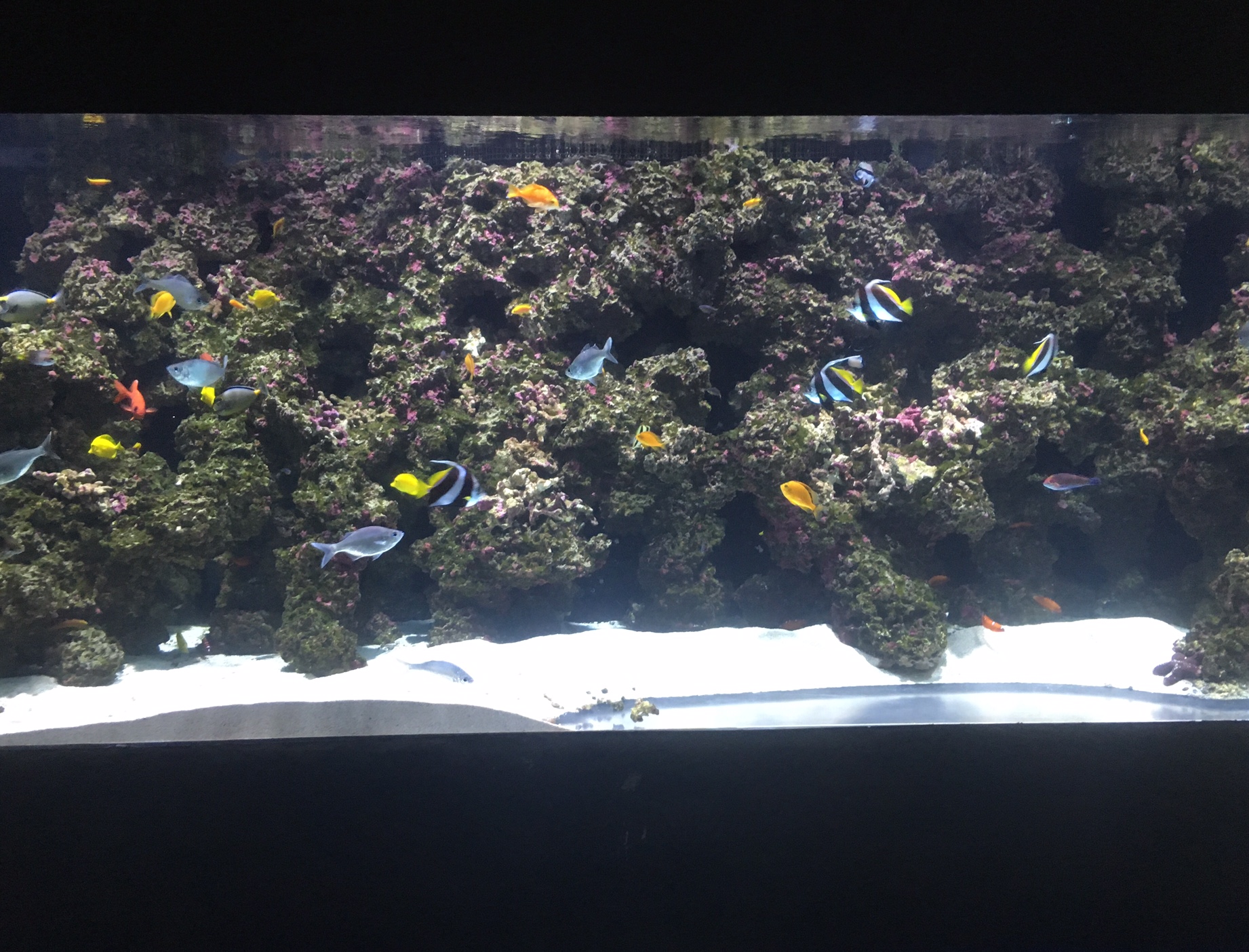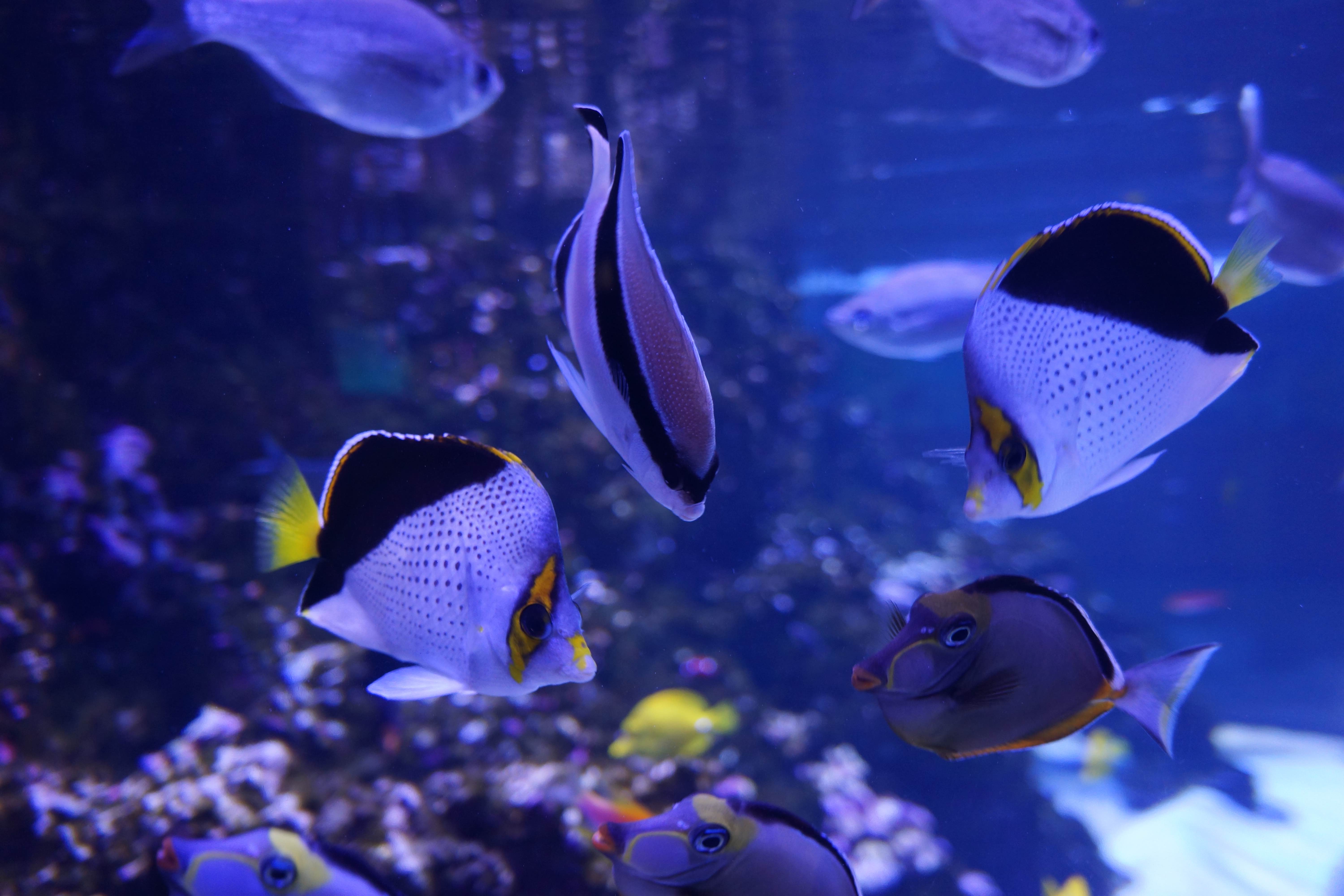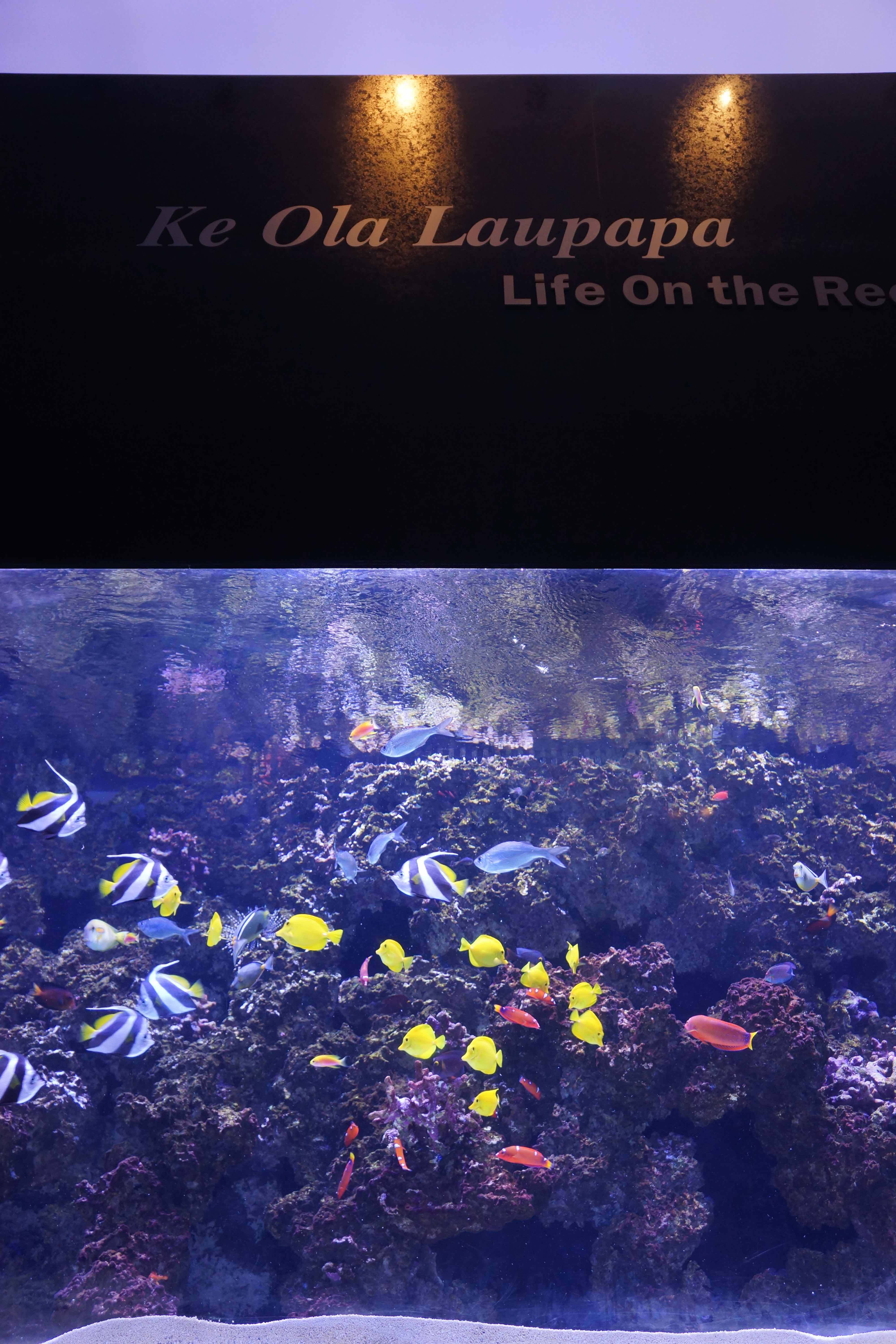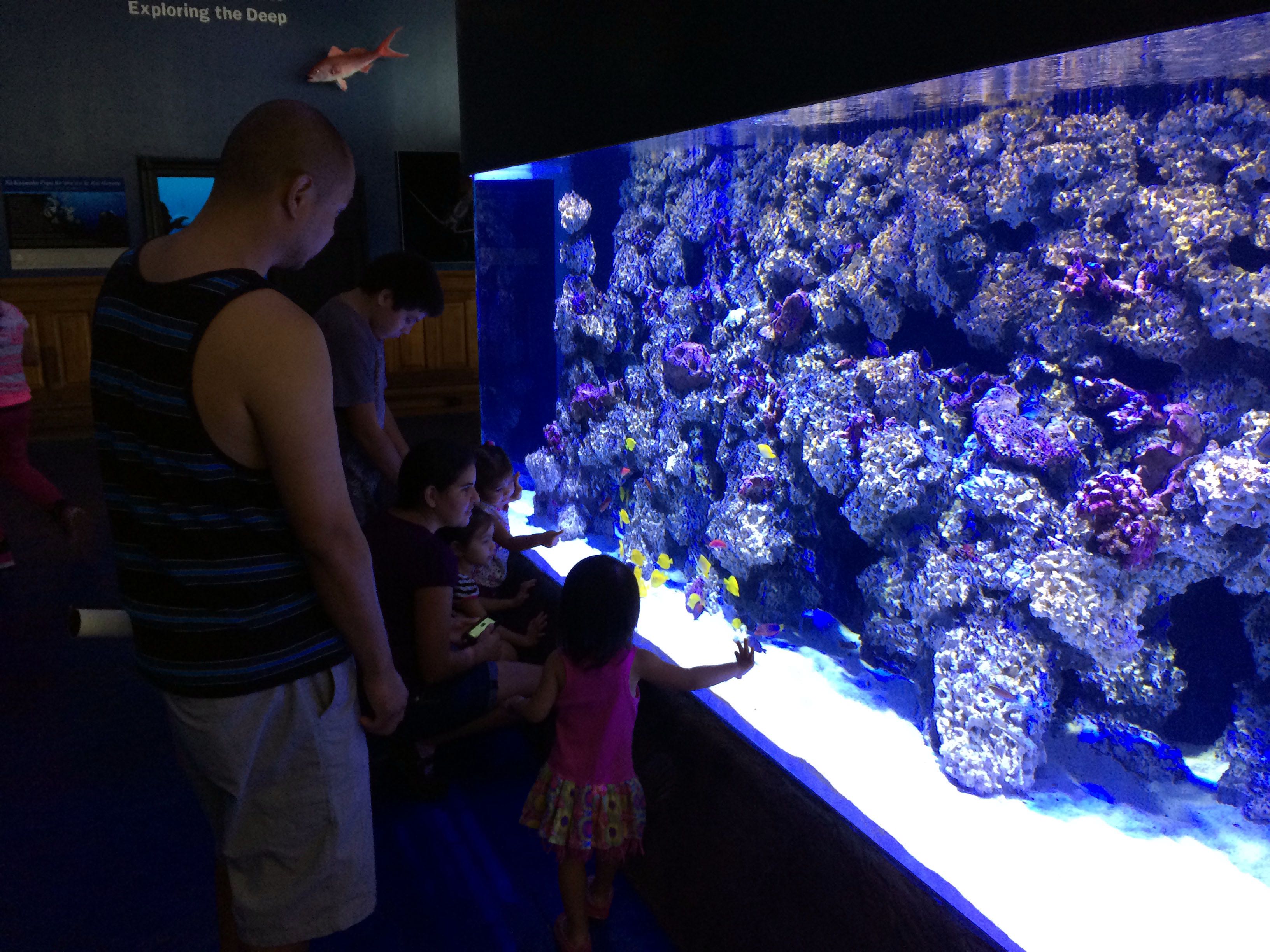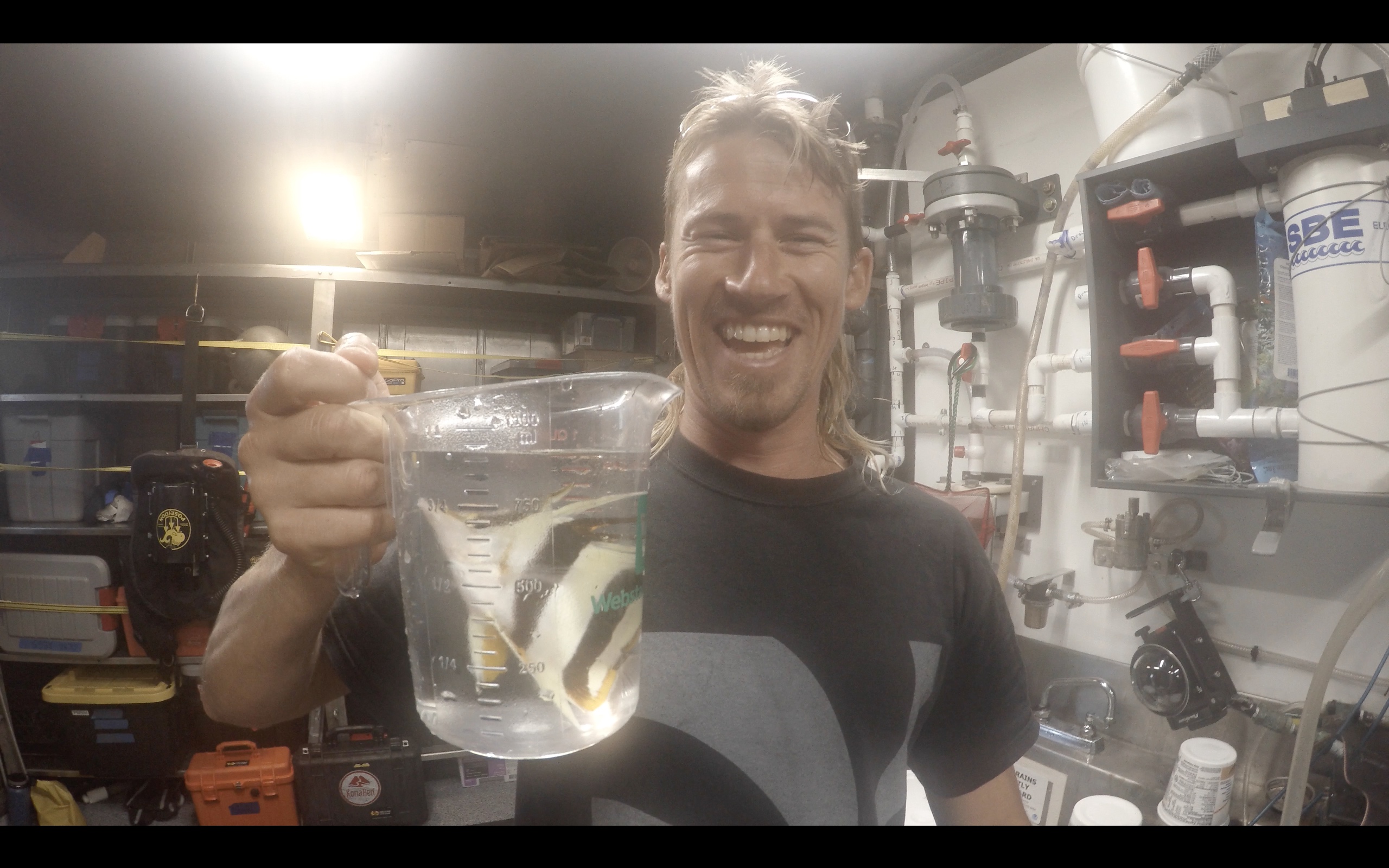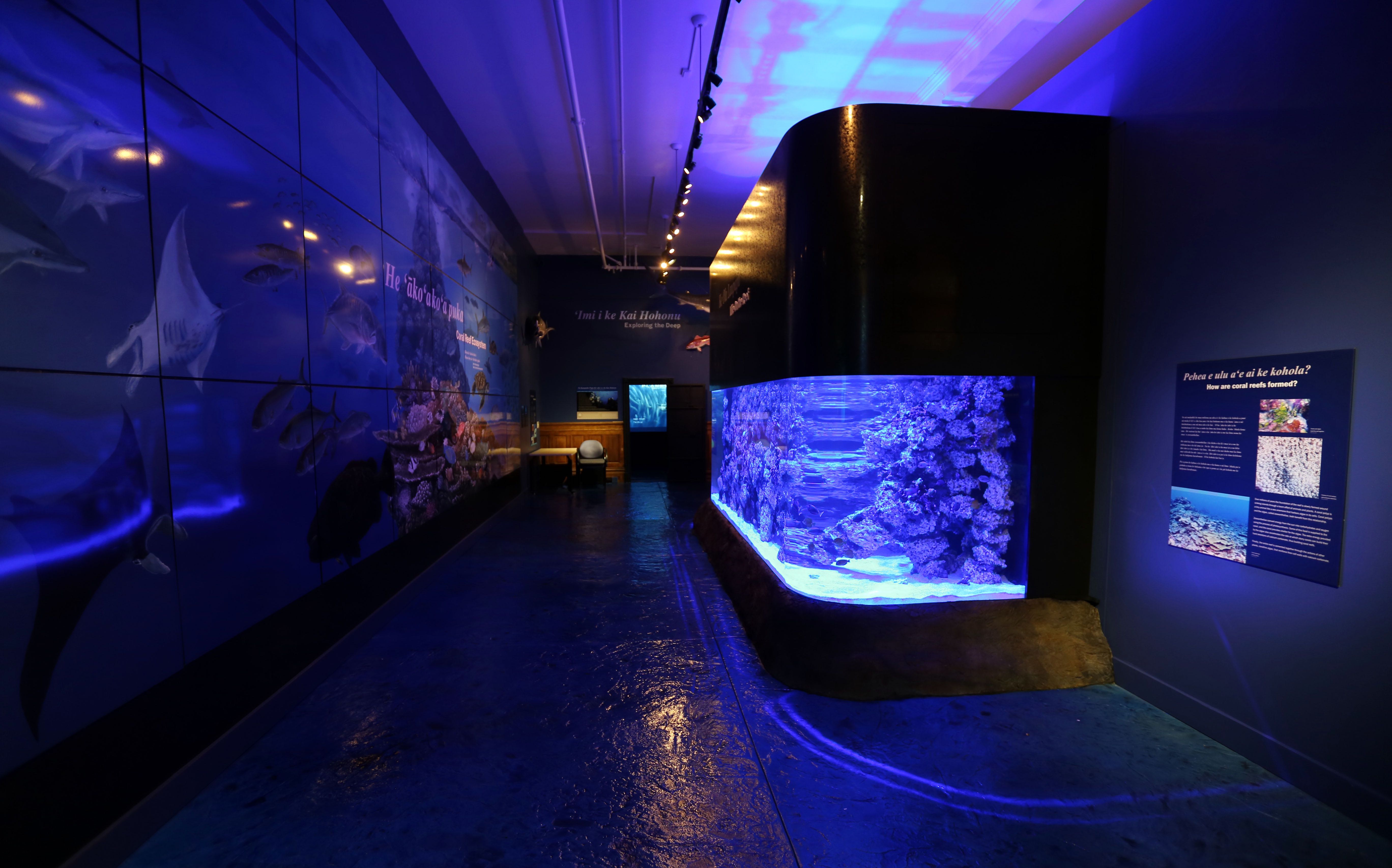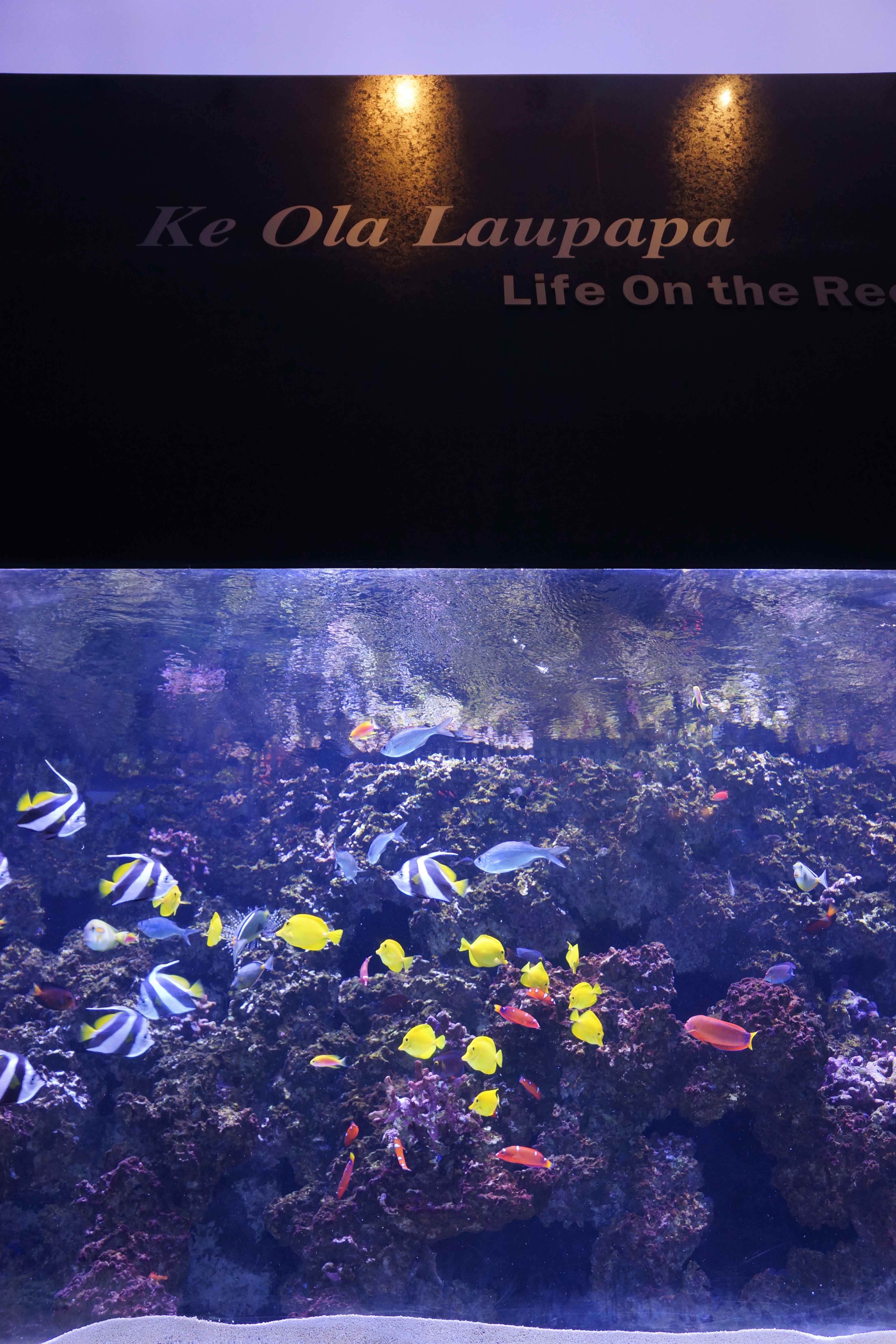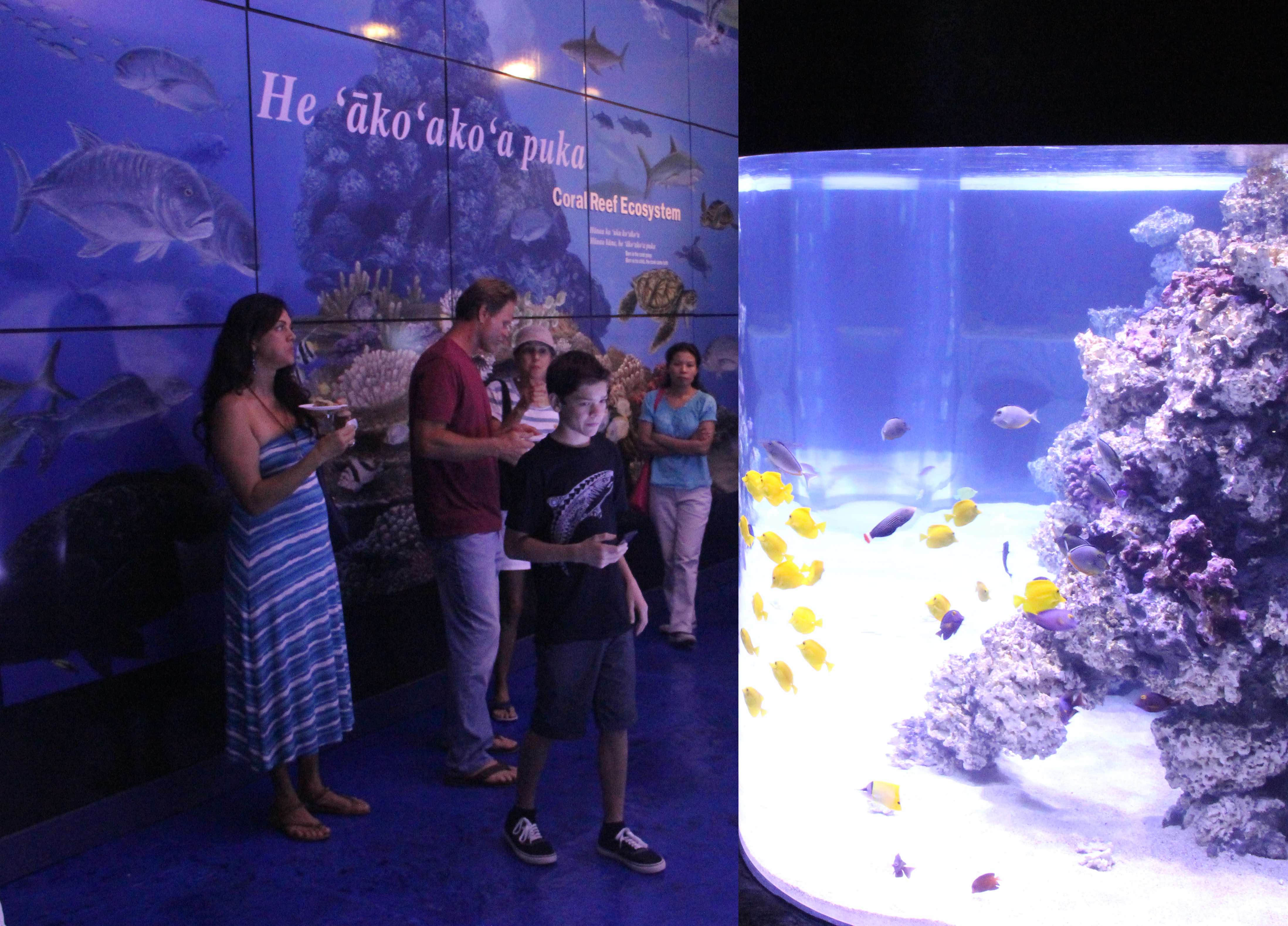We recently visited a very unique aquarium at the Mokupapapa Discovery Center in Hawaii. The mere size of this aquarium is not what makes it impressive but the beautiful and extraordinarily rare fish that it contain. While there are many familiar Naso Tangs and Yellow Tangs that come to greet you, there are plenty of unconventional fish that most aquarists would not recognize.
The 3,500 gallon (13,249 liters) tank located in Hilo Hawaii is custom built from the aquascape, which is strong enough for divers to stand on, to the skimmer which is the exact height of the basement. Most of the fish are caught by none other than the proud caretaker Tim Brown, and many of the fish were collected in the recent trip to Papahanaumokuakea atolls by Richard Pyle, Brian Greene, Pete Basabe and Tim.

Aside from the wild caught fish, this impressive aquarium also features numerous adorable captive bred Flame angelfish. Each tiny fish being just slightly bigger than your thumbnail and was bred locally in Kona Hawaii by Syd Kraul.
Since there are so many fish in the aquarium it is hard to keep the nutrients at bay, at least tolerable enough for corals. So as of now this is a fish only system with live rock but the future of this tank could possibly entail coral.

So what exactly is in the tank? The tank includes an impressive list of endemic Hawaiian species found nowhere else in the world, including several species endemic to thePapahanaumokuakea atolls from which they came from.
• Zebrasoma flavescens ( Yellow tang)
• Naso lituratus ( Naso tang)
• Ctenochaetus hawaiiensis ( Chevron tang)
• Acanthurus olivaeceus ( Orange shoulder tang)
• Ctenochaetus strigosus ( Yellow eye Kole tang)
• Centropyge loricula ( Flame angelfish)
• Genicathus personatus ( Masked angelfish)
• Apolemichthys arcuatus ( Bandit angelfish)
• Coris gaimard ( Red Coris wrasse)
• Cirrhilabrus jordani ( Flame wrasse)
• Halichoeres ornatissimus ( Ornate wrasse)
• Pseudocheilinus tetrataenia (Fourline wrasse)
• Suezichthys sp
• Heniochus diphreutes ( Banner butterflyfish)
• Chaetodon tinkeri ( Tinker’s butterflyfish)
• Prognathodes basabei
• Pseudanthias hawaiiensis ( Longfin anthias)
• Caprodon unicolor ( Elegant anthias)
• Odantanthias fuscipinnis ( Hawaiian yellow anthias)
• Oxycirrhites typus ( Longnose hawkfish)
• Canthigaster rivulata ( Maze pufferfish)
• Bodianus sanguineus ( Sunrise hogfish)
• Myripristis berndti ( Bigscale soldierfish)
• Myripristis amaena ( Brick soldierfish)
• Chromis vanderbilti ( Blackfin chromis)
•Chromis struhsakeri
•Kuhlia xenura (Hawaiian flagtail)

While this is a comprehensive list of fish there is only a hand full of invertebrates including sea cucumbers, starfish, and coral banded shrimp (you can thank the Red Coris wrasses for the limited selection). And, you’ll have to look close for the starfish as their deep purple can blend into the coralline algae covering the rocks.

How does this system withstand so many fish? Its filtration consists of a Euro Reef skimmer, two UV sterilizers, bio-pellet reactor, refugium, two Panta Rhei wave makers and a couple of tanks using the plenum method. Additionally, there are 300 gallon water vats that contain premixed saltwater that can be used daily if necessary. The tank is lit by several Ecoxotic canon LEDs.


This amazing display contains some fish, such as the Elegant anthias, which are found in no other aquarium. It even has a species of wrasse that was just discovered by Richard Pyle on the expedition to the Northwestern atolls in June.
Although much well-deserved credit is given to the scientists who discover these fish, thanks are given to Tim for bringing back these specimens alive for all of us to enjoy. Even rare fish that you may see in Oahu or other Hawaiian islands may very well have been quarantined here at the Mokupapapa Discovery Center.

This aquarium gives us a chance to see rare mesophotic fish that most of us will never get to see in the wild. What this aquarium brings to life is inexplicable and it is supreme to see these specimens alive and doing well.


